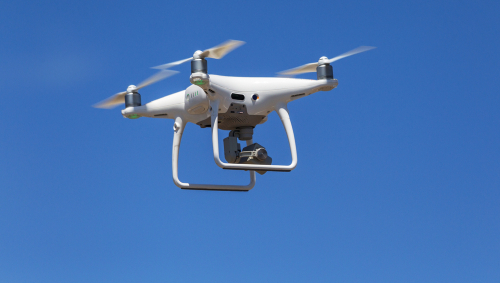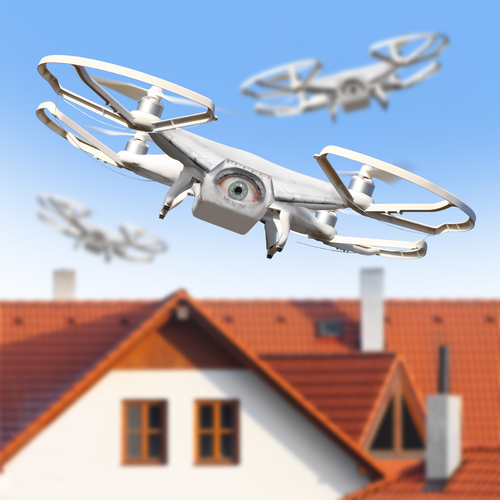If you have a business and you use drones or you plan to use them in the future, insuring them may be your wisest decision. It could save your company from financial problems in case an accident happens. Let’s face it, the technology behind drones, a.k.a unmanned aerial vehicle (UAV) and unmanned aircraft system (UAS), isn’t flawless. There have been numerous incidents of drones malfunctioning or having a system failure.
Getting your drone insured may also help you close a deal with your clients. There are many clients who make sure that they work with insured businesses before getting into any contract.
In this article, we will answer the questions:
- What is drone insurance?
- How to qualify for coverage?
- What’s covered?
- How much does it cost?
First things first, do you even need drone insurance?
You may think that your homeowner’s insurance would cover your drone; however, most homeowner’s insurance likely doesn’t include the use of drones. It’s better to ask your insurance agency about drone coverage.

Some insurance companies will only insure you if you use your drone commercially, not when you use it as a hobby. The drones, although used for fun, will be hovering on other people’s properties and could damage property or even cause injury if a malfunction happens. Your drone can also come in contact and damage electric lines, which can result in a power outage or even fire. Look for an insurance that will cover your drone for both commercial and personal uses.
So let’s get started.
What is drone insurance?
Drone insurance is like any other insurance policy. If your drone gets into an accident, the insurance company will cover the damage and liability costs to a certain extent.
How to qualify for coverage?
Most insurance companies require the drone operators to log any repair, upgrade, or maintenance done on the drone. Proof of training may also be required to ensure that operators are knowledgeable about flying an unmanned aircraft system. This means that you have a lower risk of getting into an accident while flying. A drone that’s more than 0.55 lbs needs to be registered with AAP and to be insured. When you purchase a drone, take note of the specifications because these will be needed when you register your device.
What’s covered?
Here’s a list of operations that an insurance company would insure you for:
- Real estate
- Fire and rescue
- Facilities protection: electrical, nuclear, and water sites
- Homeland security
- Law enforcement and SWAT
- National parks and recreation
- Agriculture and conservation
- Archaeology and geology exploration
- Movies and videography
- Construction
- News gathering
- Maritime and shipping
- Emergency response (FEMA)
- Pipeline/hydro-transmission line inspection
- Railroad and highway maintenance
- Traffic patrol and accident assistance
- Corrections facility security
Here’s a list of coverage by a commercial drone liability insurance:
- Loss or damage to the UAV and associated equipment
- Fire legal liability
- Third-party legal liability
- Premises liability
- Damage to premises you rent
- Aviation and premises medical payments
- Independent contractors liability
- Fellow employee coverage
- Coverage for aircraft operators, including other nonpilots, on-ground crew
- Your property and office/studio contents
- Advertising liability
- Personal injury
- War, hijacking, and terrorism
- Contractual liability
- Manufacturer product liability
- Loss or damage to the UAV and associated equipment
How much does it cost?
Drone insurance pricing is assessed based on the risk of your business. If you want to reduce the rate of your insurance:
- Implement training standards
You will initially be required to have a Part 107 license for operating drones commercially. Aside from this, take as many courses as you can, such as the Unmanned Safety Institute’s programs, to hone your skills and be a safety-conscious flyer. Make sure to get certificates and documentation for your training as proof.
- Integrate safety standards
Develop a certain SOP to follow when your team is operating a drone for a project.
- Maintain a flight logbook
Logging your flights is a great way to keep your insurance rate low. It shows that you have been flying your drones a lot and has been successfully out of accident during those times. There are many other benefits of logging your flights, such as for maintenance purposes and liability claims.
- Compare quotes
There are so many fish in the sea. Search and compare insurance rates and choose the one who offers more coverage on the best price or the one that suits your needs best.
Before you start spending more money for your drone’s upgrades and maintenance, get them insured first so that you can fly them with peace of mind knowing that you’re covered on an unlikely event.


Share your thoughts